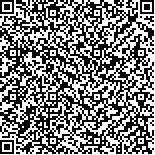宋红云,朱苏南,沈元青,等.前交叉韧带重建术后重返运动的脑功能研究[J].中华物理医学与康复杂志,2024,46(6):544-548
扫码阅读全文

|
| 前交叉韧带重建术后重返运动的脑功能研究 |
|
| |
| DOI:10.3760/cma.j.issn.0254-1424.2024.06.011 |
| 中文关键词: 前交叉韧带 重建 功能性磁共振成像 低频振荡振幅 |
| 英文关键词: Anterior cruciate ligament Reconstruction Functional magnetic resonance imaging Low-frequency fluctuations |
| 基金项目:浙江省公益性基础研究计划项目(GF20H170025) |
|
| 摘要点击次数: 3088 |
| 全文下载次数: 4291 |
| 中文摘要: |
| 目的 探索前交叉韧带重建术(ACLR)术后2年不同运动能力人群脑功能重塑的差异性及其与功能行为学指标之间的关系。 方法 选取同一术者完成的ACLR术后2年并自愿参加实验的研究对象34例,分为重返组(17例)和非重返组(17例),并另选取与重返组性别、年龄、运动参与水平相匹配的健康人作为健康对照组14例,采用静息态功能性磁共振成像(rs-fMRI)获取3组测试者血氧水平依赖信号值,采集国际膝关节文献委员会(IKDC)膝关节主观评价量表、Tegner 活动量表(TAS)评分,以及6 m计时单脚跳、水平单脚跳、垂直单脚跳、侧方单脚跳联合的跳跃测试集、Y平衡功能测试(YBT)的肢体对称指数(LSI),运用低频振荡振幅(ALFF)计算0.01~0.08 Hz频段信号的变化,采用单因素方差分析评估3组间ALFF图谱的差异,并进行重返组与非重返组间比较,提取之间差异团块内的ALFF值,与临床功能测试指标进行Person相关性分析。 结果 经高斯随机场理论(GRF)多重比较校正后结果显示,3组的双侧壳核ALFF值差异均有统计学意义(体素P<0.05, 团块P<0.05,GRF校正);重返组与非重返组组间比较显示右侧小脑_8区和双侧壳核ALFF值的差异有统计学意义(体素P<0.05,团块P<0.05, GRF校正)。2组患者的水平和侧方单脚跳LSI及IKDC和TAS评分组间差异均有统计学意义(P<0.05)。提取差异脑区的ALFF值与功能测试Pearson相关性分析显示,重返组的右侧小脑_8区的ALFF值与YBT-LSI呈正相关性(r=0.549,P<0.05)。 结论 ACLR术后重返运动者行皮质下的脑功能重塑,YBT可以间接反映小脑功能重塑的变化,可为术后制订相关功能康复策略提供高级脑功能理论依据。 |
| 英文摘要: |
| Objective To explore the remodeling of brain function 2 years after anterior cruciate ligament reconstruction (ACLR) and its relationship with functioning and behavior. Methods Forty-eight volunteers who had received ACLR from the same surgeon were divided into a coping and a non-coping group, each of 17. Another 14 health volunteers formed the control group. Resting-state functional magnetic resonance imaging was used to record blood oxygen level-dependent signals from the members of all three groups in the 0.01 to 0.08Hz band. One-way analysis of variance was applied to the differences in low frequency amplitude (ALFF) observed. Results The results of multiple comparisons with Gaussian random field theory correction showed that the differences in bilateral putamen ALFF values among the three groups were statistically significant. The signals from the right cerebellar area 8 and the bilateral putamen were significantly stronger among the non-coping group on average. Pearson correlation analysis showed that the ALFF values from the right cerebellar 8 region were positively and significantly more correlated with the symmetry of a subject′s Y balance function test results in the coping group compared with the non-coping group. Conclusions Subcortical brain function remodeling occurs in ACLR patients returning to exercise after surgery, and a Y-balance function test can indirectly reflect such remodeling. That can provide a basis for designing programs for rehabilitating advanced brain functions. |
|
查看全文
查看/发表评论 下载PDF阅读器 |
| 关闭 |
|
|
|